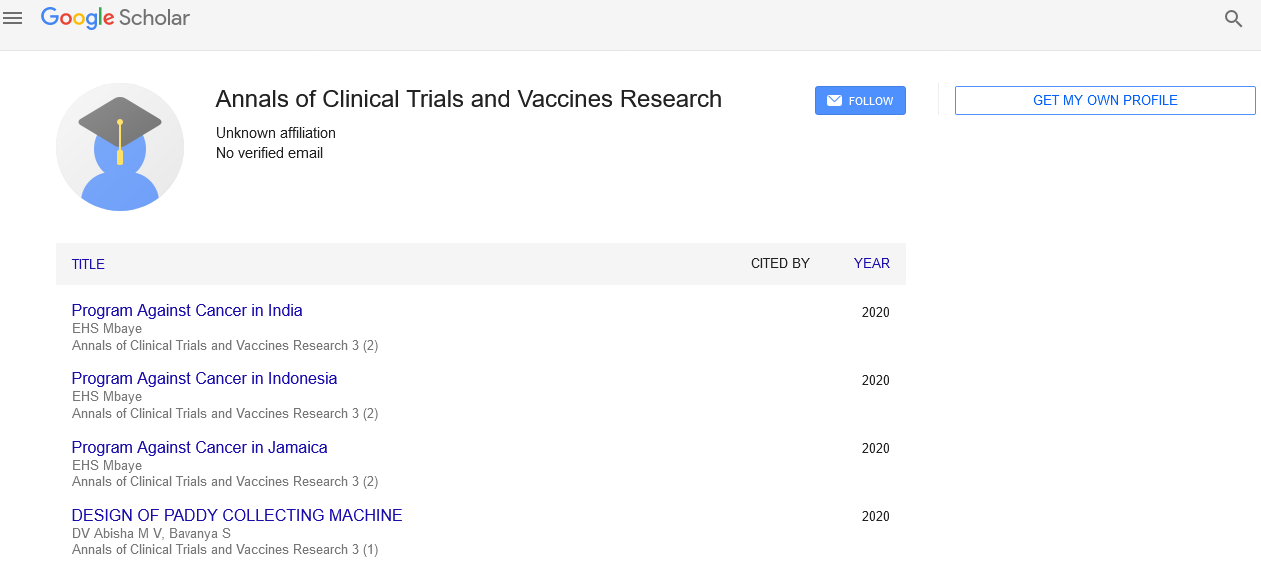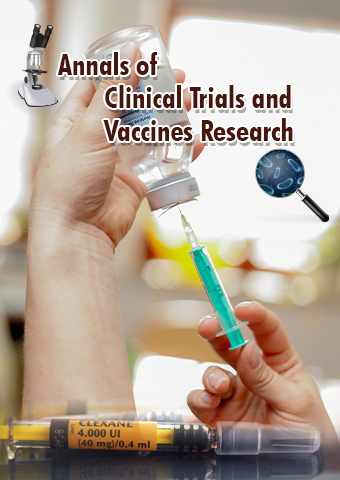Commentary - Annals of Clinical Trials and Vaccines Research (2023) Volume 13, Issue 3
Advancing into Phase 2: Unveiling New Opportunities for Growth
Banshi Saboo*
Department of Medicine and Therapeutics, The Chinese University of Hong Kong, Prince of Wales Hospital, Shatin, Hong Kong, China
Department of Medicine and Therapeutics, The Chinese University of Hong Kong, Prince of Wales Hospital, Shatin, Hong Kong, China
E-mail: saboobanshi@gmail.com
Received: 01-June-2023, Manuscript No. actvr-23-100008; Editor assigned: 05- June -2023, PreQC No. actvr-23-100008 (PQ); Reviewed: 19- June -2023, QC No. actvr-23-100008; Revised: 21- June -2023, Manuscript No. actvr-23-100008 (R); Published: 28- June -2023; DOI: 10.37532/ ACTVR.2023.13(3).77-79
Abstract
In the world of scientific research and development, reaching Phase 2 of a project marks a significant milestone. It signifies that promising findings from earlier stages have paved the way for further exploration and experimentation. The transition into Phase 2 opens up a whole new realm of opportunities, where researchers can delve deeper into their investigations and gain deeper insights into their subject matter. One remarkable example of a project entering Phase 2 is the groundbreaking study on a potential treatment for a rare genetic disorder known as Duchenne muscular dystrophy (DMD). Titled “Advancing into Phase 2: Unveiling New Opportunities for Growth,” this article highlights the remarkable progress made by a team of dedicated researchers from a prominent pharmaceutical company
Introduction
In the initial stages of the project, researchers focused on understanding the underlying mechanisms of DMD and developing a novel therapeutic approach. Their hard work and dedication paid off when preclinical trials showcased promising results, demonstrating the potential of their treatment strategy to alleviate symptoms and improve the quality of life for individuals affected by DMD. Now, as the study enters Phase 2, the researchers are poised to take their investigation to the next level. This phase involves conducting extensive clinical trials involving a larger cohort of participants. These trials will not only assess the safety and efficacy of the treatment but also provide valuable data on the longterm effects and potential side effects.
The significance of this research extends beyond the realm of DMD alone. Success in Phase 2 could pave the way for innovative therapeutic approaches to a wide range of genetic disorders, opening up new avenues for the treatment of previously untreatable conditions. Furthermore, the research team’s commitment to collaboration and knowledge sharing encourages the scientific community to work collectively towards finding solutions for rare diseases. Entering Phase 2 is not without its challenges. The researchers must navigate complex regulatory procedures, secure funding for the expanded trials, and address any unforeseen hurdles that may arise. However, the team remains steadfast in their pursuit of progress, fueled by the hope of bringing relief to those affected by DMD and setting a precedent for future advancements in genetic disorder research [1-3].
As the study progresses into Phase 2, the researchers and their collaborators are eager to build upon the solid foundation they have established. Their tireless efforts exemplify the transformative power of scientific exploration and highlight the potential to improve the lives of countless individuals facing genetic disorders. With every step forward, this research project not only unveils new opportunities for growth but also offers a glimmer of hope to patients and their families who have long awaited effective treatments. In recent years, Phase 2 clinical trials have emerged as a crucial stage in the development of new drugs and therapies, playing a pivotal role in determining their efficacy, safety, and potential for market approval. This article aims to explore the latest advancements in Phase 2 clinical trials, highlighting their significance in accelerating drug development and the profound impact they have on patient outcomes [4,5].
Discussion
One notable advancement in Phase 2 clinical trials is the integration of innovative trial designs and adaptive methodologies. Traditionally, Phase 2 trials followed a fixed design, often testing a single drug at a fixed dose on a small cohort of patients. However, researchers and regulatory bodies recognized the need for more flexible approaches to address the complex challenges of modern drug development. Adaptive trial designs allow for modifications in the trial protocol based on accumulating data. This flexibility enables researchers to optimize the trial parameters, such as dosage levels, patient eligibility criteria, and even treatment arms, in real-time. By adapting the trial design, researchers can identify promising treatments more efficiently, reduce the number of patients required, and accelerate the decision-making process regarding drug advancement.
Another significant advancement in Phase 2 trials involves the integration of biomarkers and personalized medicine approaches. Biomarkers are measurable indicators that provide valuable insights into disease progression, treatment response, and patient stratification. With advancements in genomics, proteomics, and other “-omics” technologies, researchers can identify and utilize specific biomarkers to predict treatment outcomes and select patients who are more likely to respond positively to a particular therapy (Figure 1). This personalized medicine approach allows for a more targeted and precise treatment strategy, maximizing the potential benefits for patients while minimizing unnecessary exposure to potentially ineffective therapies. By incorporating biomarkers and personalized medicine into Phase 2 trials, researchers can better understand the underlying mechanisms of diseases and develop tailored interventions that yield improved patient outcomes [6,7].
Furthermore, the adoption of novel technologies and data analytics has revolutionized Phase 2 clinical trials. The integration of electronic data capture systems, wearable devices, and remote monitoring technologies enables realtime data collection, providing a more comprehensive and accurate assessment of treatment efficacy and safety. Advanced analytics, including artificial intelligence and machine learning algorithms, help analyze vast amounts of data, identify patterns, and generate actionable insights that guide decision-making. These technological advancements enhance the efficiency of data collection, reduce the burden on patients, and enable more precise measurements of treatment responses. Moreover, they facilitate seamless collaboration among researchers and clinicians, fostering a more integrated and interdisciplinary approach to drug development [8-10].
Conclusion
In conclusion, Phase 2 clinical trials have evolved significantly in recent years, driven by innovative trial designs, personalized medicine approaches, and technological advancements. These developments have greatly enhanced the efficiency, precision, and impact of Phase 2 trials on drug development and patient outcomes. By embracing these advancements, researchers can accelerate the development of novel therapies, improve treatment outcomes, and ultimately bring hope to patients in need.
Acknowledgement
None
Conflict of Interest
None
References
- Cho NH, Shaw JE, Karuranga A. IDF Diabetes Atlas: global estimates of diabetes prevalence for 2017 and projections for 2045. J Diabetes Res. 138,271-281 (2018).
- Semenkovich K, Brown ME, Svrakic DM et al. Depression in type 2 diabetes mellitus: prevalence, impact, and treatment. Drugs. 75,577-587 (2015).
- Fradkin J. Diabetes clinical trials: what is new at NIDDK? Clin Diabetes. 22,109-112 (2004).
- Lu Z, Su J. Clinical data management: current status, challenges, and future directions from industry perspectives. Open Access J Clin Trials. 2,93-105 (2010).
- Nourani A, Ayatollahi H, Dodaran MS et al. Clinical trial data management software: a review of the technical features.Rev Recent Clin Trials. 14,160-172 (2019).
- Krishnankutty B, Naveen Kumar B, Moodahadu L et al. Data management in clinical research. Indian.33,122-126 (2010).
- Cavenaugh JS, Snell P, Jeffries D et al. A relational database for management of flow cytometry and ELISpot clinical trial data. Clinical Cytometry. 72,49-62 (2007).
- Das S, Zijdenbos AP, HarlapJ et al. A web-based data management system for multi-center studies. Front Neuroinform. 5,37-11 (2011).
- Gao QB, Kong Y, Fu Z et al. A clinical data management system. Comput Biol Med. 38,1042-1044 (2008).
- Ngari MM, Waithira N, Chilengi R et al. Experience of using an open source clinical trials data management software system in Kenya. BMC Research Notes. 7,845-853 (2014).
Google Scholar, Crossref, Indexed at
Google Scholar, Crossref, Indexed at
Google Scholar, Crossref, Indexed at
Google Scholar, Crossref, Indexed at
Google Scholar, Crossref, Indexed at
Google Scholar, Crossref, Indexed at
Google Scholar, Crossref, Indexed at
Google Scholar, Crossref, Indexed at

